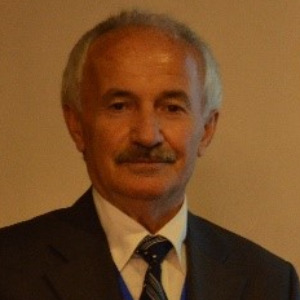Title : Shape memory phenomena and nanocharacterization of reversibility in shape memory alloys
Abstract:
Shape memory alloys take place in a class of advanced smart materials by exhibiting a peculiar property called shape memory effect, with the recoverability of two shapes at different conditions. This phenomenon is initiated with thermomechanical treatments on cooling and deformation and performed thermally on heating and cooling, with which shape of the material cycles between original and deformed shapes in reversible way. Therefore, this behavior can be called thermoelasticity. This is plastic deformation, du to the soft character of martensite, with which deformation energy is stored in the material, and releases on heating by recovering the original shape. This phenomenon is governed by the crystallographic transformations, thermal and stress induced martensitic transformations in nano level. Thermal induced martensitic transformations occur on cooling with cooperative movement of atoms in <110 > -type directions on {110} - type close packed planes of austenite matrix, along with lattice twinning reaction and ordered parent phase structures turn into the twinned martensite structures. The twinned structures turn into detwinned martensite structures by means of stress induced martensitic transformations with deformation in the low temperature condition. Atomic movements are confined to the nearest atom distances, and martensitic transformations have diffusionless character. Also, lattice twinning and detwinning reactions play important role in martensitic transformations, and they are driven by inhomogeneous lattice invariant shear.
These alloys exhibit another property, called superelasticity, which is performed with stressing and releasing the materials in elasticity limit at a constant temperature in the parent phase region, and shape recovery occurs simultaneously upon releasing, by exhibiting elastic material behavior. Stress-strain diagram is nonlinear, stressing and releasing parts are different, and hysteresis loop refers to energy dissipation. Superelasticity is also result of stress induced martensitic transformation, and the ordered parent phase structures turn into the detwinned martensite structures with stressing.
Copper based alloys exhibit this property in metastable β-phase region. Lattice twinning and lattice invariant shear is not uniform in these alloys and cause the formation of complex layered structures. The layered structures can be described by different unit cells as 3R, 9R or 18R depending on the stacking sequences on the close-packed planes of the ordered lattice. The unit cell and periodicity are completed through 18 layers in direction z, in case of 18R martensite in copper based ternary shape memory alloys.
In the present contribution, x-ray and electron diffraction studies were carried out on copper based CuAlMn and CuZnAl alloys. X-ray diffraction profiles and electron diffraction patterns exhibit super lattice reflections. X-ray diffractograms taken in a long-time interval show that diffraction angles and intensities of diffraction peaks change with the aging duration at room temperature. This result refers to the rearrangement of atoms in diffusive manner.
Keywords: Shape memory effect, martensitic transformation, thermoelasticity, superelasticity, lattice twinning, detwinning.



